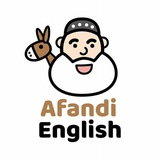#14 World Englishes: Canadian English
❗️ Canada is the second biggest country in the world but has less than 40 million inhabitants of which a majority (57%) speak English and a minority (21%) speak French, the remaining 16% being bilingual.
🔘 Pronunciation: You probably won’t hear a difference between Canadian and American English. The two together are “North American English”. Some words, however, have a more British pronunciation, e.g. “progress”, “process” and “project”. The [t] in some words like “mountain” or “internet” are also not reduced.
🔘 Vocabulary: Canada follows mostly British spelling. Curiously, Canadians may use “hey?” or “ey?” as a tag question, like “huh?” or “isn’t it?”. A toilet may be called “washroom” and the last letter of the alphabet is the British “zed” rather than the American “zee”.
▶️ Check out what it sounds like:
⛓ Canada’s prime minister’s speech with subtitles
⛓ A tutorial
👉@afandi_english👈 #world_english
❗️ Canada is the second biggest country in the world but has less than 40 million inhabitants of which a majority (57%) speak English and a minority (21%) speak French, the remaining 16% being bilingual.
🔘 Pronunciation: You probably won’t hear a difference between Canadian and American English. The two together are “North American English”. Some words, however, have a more British pronunciation, e.g. “progress”, “process” and “project”. The [t] in some words like “mountain” or “internet” are also not reduced.
🔘 Vocabulary: Canada follows mostly British spelling. Curiously, Canadians may use “hey?” or “ey?” as a tag question, like “huh?” or “isn’t it?”. A toilet may be called “washroom” and the last letter of the alphabet is the British “zed” rather than the American “zee”.
▶️ Check out what it sounds like:
⛓ Canada’s prime minister’s speech with subtitles
⛓ A tutorial
👉@afandi_english👈 #world_english
